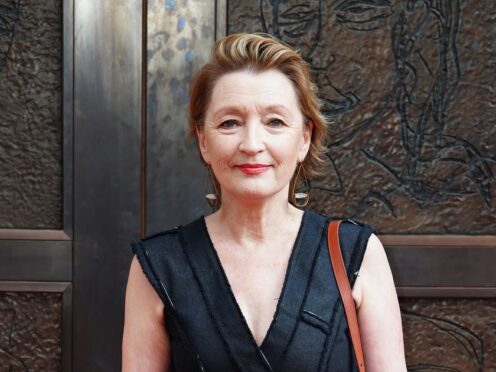Lesley Manville has spoken about her “epic” family history which she discovered involved her relatives being transported to Australia.
The 67-year-old actress, who portrayed Princess Margaret in Netflix series The Crown, has delved into her past as part of the BBC programme Who Do You Think You Are?
During the episode she traces her father’s line back to her three-times great grandfather Aaron Harding, an agricultural worker in rural Hampshire.
Mr Harding, who was a widower with a large family to feed, took part in the Swing Riots in 1830, a protest against pay and poor conditions according to the show.

Manville learned in the episode he was arrested and subsequently transported to Australia as one of the key figures in the riots.
The actress, also known for period drama film Mrs Harris Goes To Paris and comedy series Mum, had fantasised about her family being “great actors or singers” but was not prepared for what she “uncovered”.
In an interview, the Oscar-nominated actress said: “It was epic! They were a huge part of history that I’d only learnt about in school.
“Their treatment was shocking given that the Swing Rioters were only fighting for basic human rights and my heart went out to Aaron’s nine children (ranging from an eight-month-old baby to a 17-year-old) who were left to fend for themselves.
“Their mother had died a short time before. Utterly heartbreaking.”
Mr Harding was given a conditional pardon, which meant he could not go back to England, and had a child with a woman called Alice, who was married to someone else.
She then met two of her female cousins who showed her a picture of Mr Harding along with a copy of an inquest report by a South Australian newspaper, the Adelaide Times, which said he died in an accident.

Manville said: “Well I was meeting two strangers obviously, but the family facial similarities were uncanny and they were so warm and funny. It was colder than I had prepared for so they bought me a hat and scarf. Adorable.”
Also during the show, she found out her maternal grandparents had a complex story of wartime separation and adultery in which they had both been married to other people and had children.
Her grandparents, James Edwards and Harriet Barton, never married and lived together with their daughter, Manville’s mother.
Mr Edwards referred to Harriet as his “friend” in his will while leaving all of his possessions to her when he died in 1943.
Manville said: “That for me was the most touching part of the story. There was so much stigma surrounding that relationship, wrongly so, so when the truth was revealed I found it deeply moving.
“I wish my mother was still here to hear it and have her parents’ love vindicated.”
The episode of Who Do You Think You Are? with Manville airs on July 27 at 9pm on BBC One.
